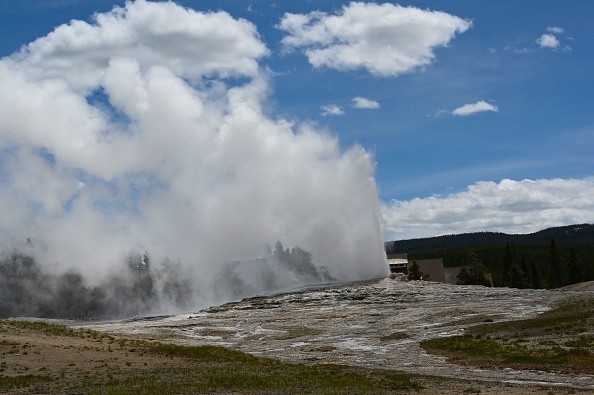While crowds gather around Old Faithful to await its next eruption, a small pool just north of Yellowstone National Park's most famous geyser is quietly displaying its own unique activity, which occurs at roughly regular intervals.
Instead of erupting in a towering geyser, Doublet Pool thumps every 20 to 30 minutes to crank up the bass.
The ground shakes and the water vibrates.
The regular thumping of Doublet Pool is more than just an interesting tourist attraction.
The authors discovered that Yellowstone's thumping thermometer is Doublet Pool.
Not quite like a geyser
 (Photo : DANIEL SLIM/AFP via Getty Images)
(Photo : DANIEL SLIM/AFP via Getty Images)

"By studying Doublet Pool, we hope to gain knowledge on dynamic hydrothermal processes that can potentially be applied to understand what controls geyser eruptions, as well as less predictable and more hazardous hydrothermal explosions," said Fan-Chi Lin, an associate professor in the U's department of geology and geophysics and a study co-author, as per ScienceDaily.
The name Doublet Pool refers to a pair of hydrothermal pools connected by a small neck.
It would easily fit in one half of a tennis court.
It's located on Yellowstone National Park's Geyser Hill, across the Firehole River from the hotels, visitor centers, and parking lots that surround Old Faithful.
Lin explained that the thumping, which lasts about 10 minutes, is caused by bubbles in the plumbing system that feeds water to Doublet Pool which has been heated by a magma system beneath Yellowstone.
When those water vapor bubbles reach the cool upper reaches of the hydrothermal conduit, they burst.
Lin explained that a similar process occurs in geysers and causes "hydrothermal tremor," but it occurs deeper in the hydrothermal system, at depths of about 30 to 60 ft, and ends with the geyser releasing pressure through a narrow opening as an eruption.
Because Doublet Pool lacks a plumbing structure that allows pressure accumulation, no eruption occurs.
Furthermore, scientific instruments placed in and around the pool are not at risk of being blown out on a regular basis.
Also Read: Next Yellowstone Volcanic Eruption is Overdue, Possibly Magnitude 8 or Higher
As If You Were Blowing On A Pot Of Pasta
The silence interval, or the time between thumping periods, was of particular interest to the researchers, as per Phys.org.
They discovered that the silence interval varied from year to year as well as hour to hour or day to day.
Their findings suggest that the variation is caused by different processes of adding or removing heat from the hydrothermal system.
The silence interval in November 2016 was approximately 30 minutes.
However, by September 2018, the interval had been cut in half to around 13 minutes, and by November 2021, it had been restored to around 20 minutes.
What else was going on on Geyser Hill at the same time? Ear Spring, located 200 feet (60 meters) northwest of Doublet Pool, erupted for the first time since 1957 on September 15, 2018.
Using heat transfer principles, the authors calculated the amount of heat and the heating rate required to start thumping at Doublet Pool.
Consider again blowing on a pot of pasta.
You can avoid boiling over by removing heat (via blowing) at the same rate as heat enters the pot.
The heating rate for Doublet Pool is approximately 3 to 7 megawatts of energy.
Lin estimated that it would take about 100 household furnaces running at the same time to heat up Doublet Pool sufficiently to thump.
This is also equivalent to more than $5,000 in energy per day, demonstrating geothermal energy's potential.
Related article: Yellowstone Update: Authorities Warn of Unsafe Local Drinking Water and Displaced Wildlife, Earthquake Swarm Recorded Before Flooding
© 2024 NatureWorldNews.com All rights reserved. Do not reproduce without permission.





